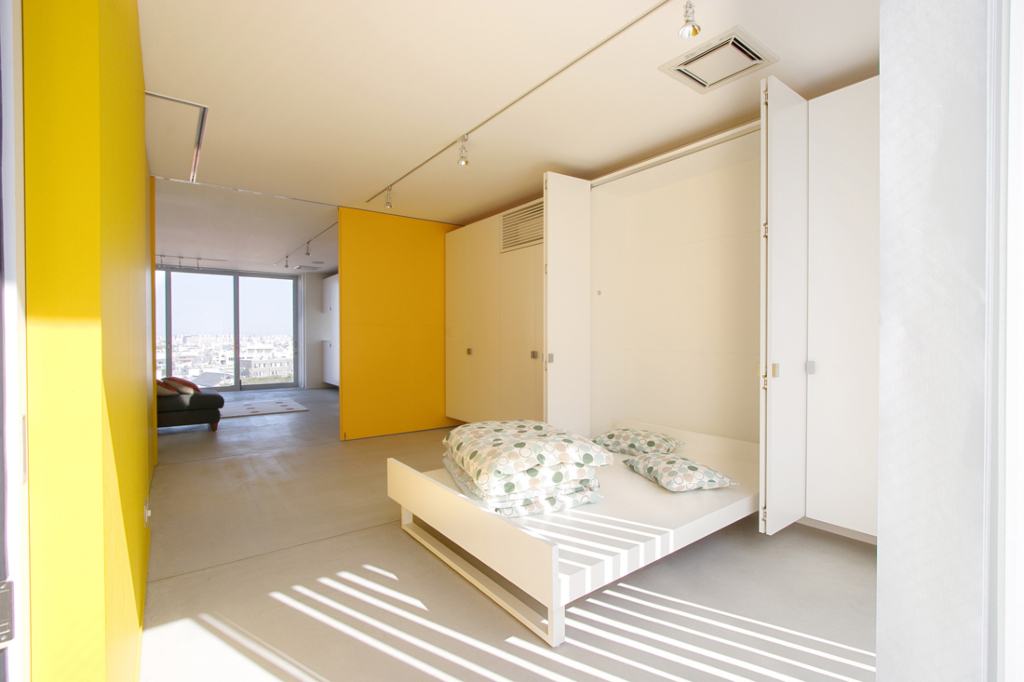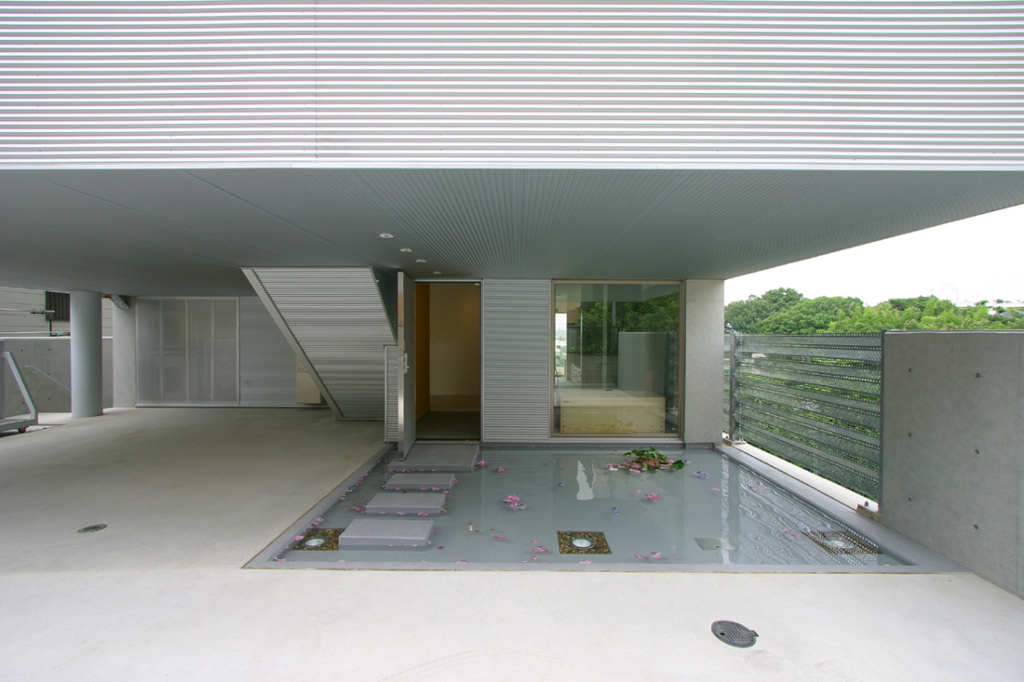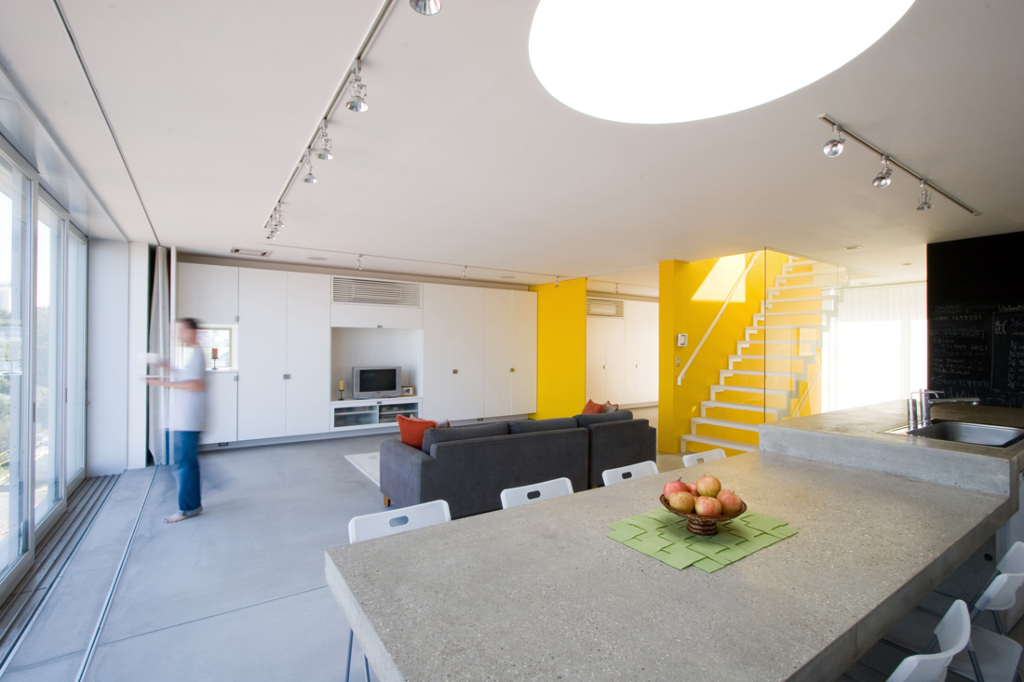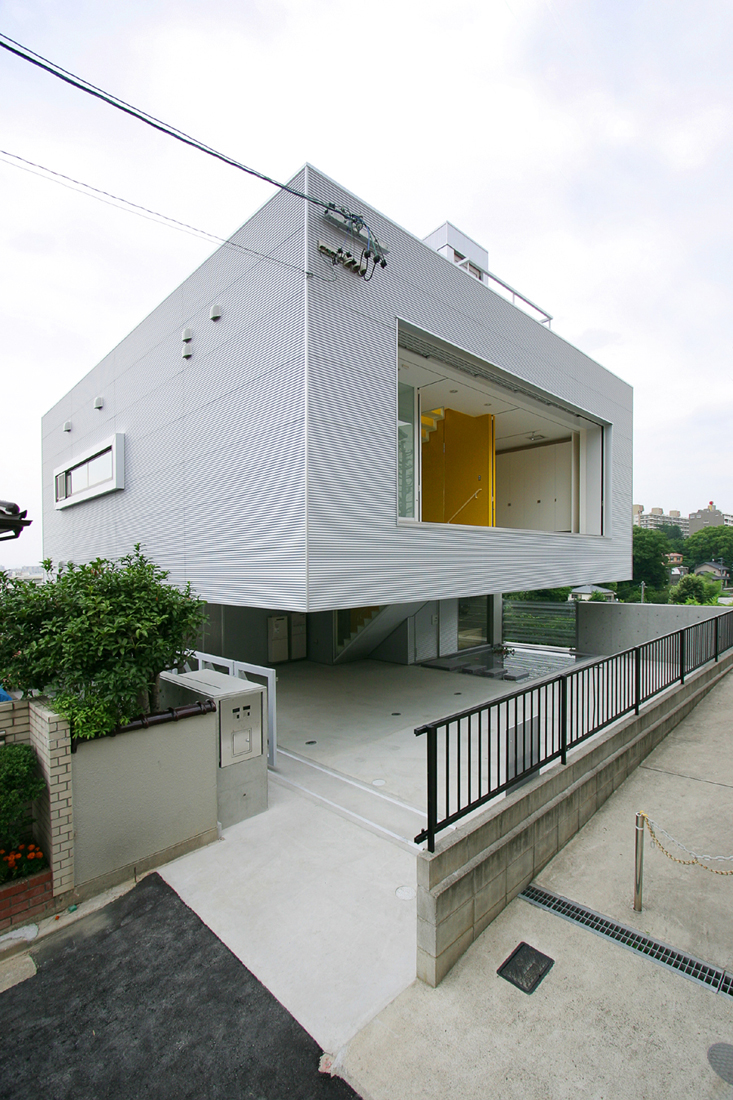
Architects: Architecture W
Location: Nagoya, Japan
Project Team: Michel Weenick, Yukiko Iwanaga, Brian White
Client: Michel Weenick
Project Year: 2005
Constructed Area: 320 sqm
Structural Engineer: Structure NANA
Photographer: Andy Boone
Located in one of Nagoya’s more attractive residential neighborhoods, but with only 2.5 meters of dead end street access and set on a difficult site that steps down from this access level a total of 7 meters, M-House is designed to both address the site conditions that rendered the site “unbuildable” by the local real estate community and provide for a simple, modern lifestyle for the American owner/architect and his family.
In addition to the challenge provided by the site itself, the house also addresses the conceptual challenges of planning for a multi generational/multi national family, as well the even bigger challenge of securing precious views, sunlight, and breezes in the context of a cramped traditional Japanese neighborhood. Despite the difficulty in accessing and actually building on the site, it was the property’s one redeeming feature - its location at the edge of a cliff that hovers over the northern part of Nagoya - that inspired the design of the house.
A hybrid structural system made up of simple reinforced concrete, concrete incased steel, and a pair of 3 meter tall steel trusses - all running inside the east and west walls of the house - allow the design to accommodate a variety of site and program conditions while also allowing for the north and south elevations to be composed entirely of sliding glass walls that capture the views, sunlight, and breezes(essential to surviving the smog & humidity present during Nagoya’s summer months) that make this building site so special.
At the lowest level, this structure is tied into additional retaining walls to carve out an independent apartment that is a modern take on the Japanese notion of looking after one’s parents as they get old.
At the entry level, column free space is provided for both parking and turning the owner’s automobiles, as well as for the house’s entry, bedrooms and main bathing area. A small pool is situated underneath the cantilevered top level to reflect sunlight into the bathing area where a single glass wall is all that separates this center of Japanese family life - complete with its wooden soaking bath -from the entry area.
The top level of the house is virtually a single open space that serves as the house’s main living space. The steel trusses that allow for the 5+ meter cantilever are buried behind 2 walls of storage and kitchen cabinetry so that the remaining 2 sides of the steel box - the north and south elevations - can be composed entirely of sliding glass walls. These 2 walls slide into pockets and allow the entire room to become an “outdoor” family room from which spectacular views and pleasant breezes can be enjoyed.
A roof deck caps off the house and accommodates another large outdoor gathering space for entertaining. The main stair well, with its yellow wall slices through the residence to visually tie the different levels together and to allow sunlight down into the main entry level of the house.
The project’s simple architecture - exposed concrete walls & floors, galvanized metal siding, plasterboard infill walls and white laminate cabinetry - provide a neutrality that is animated as much by the Japanese and Western influences of the the client’s family as it is animated by the site’s vistas, breezes, and passing sunlight.
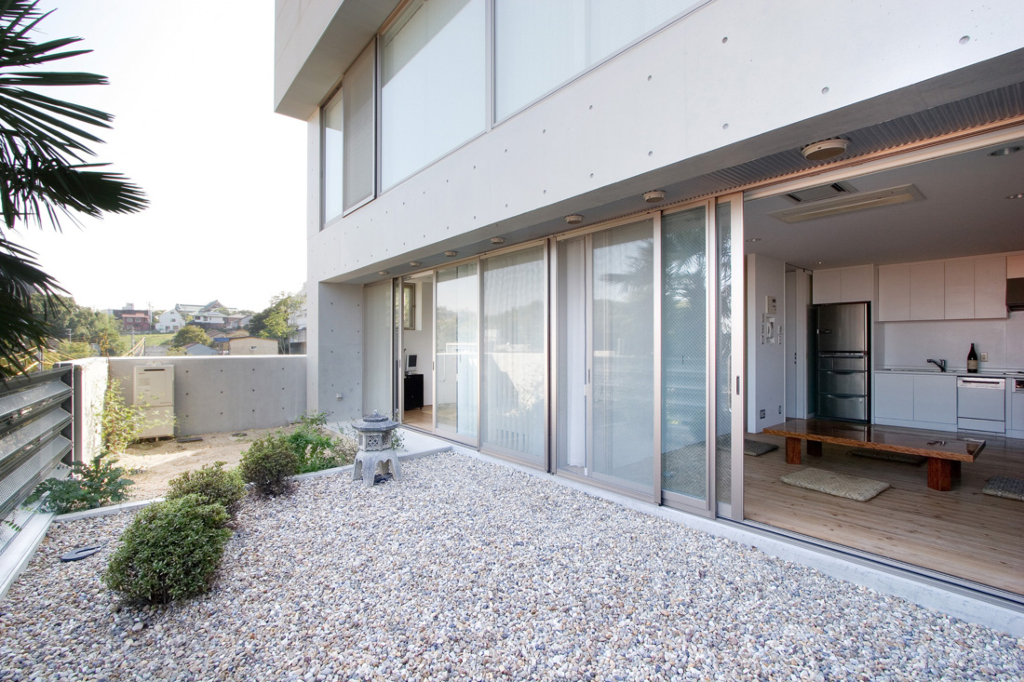
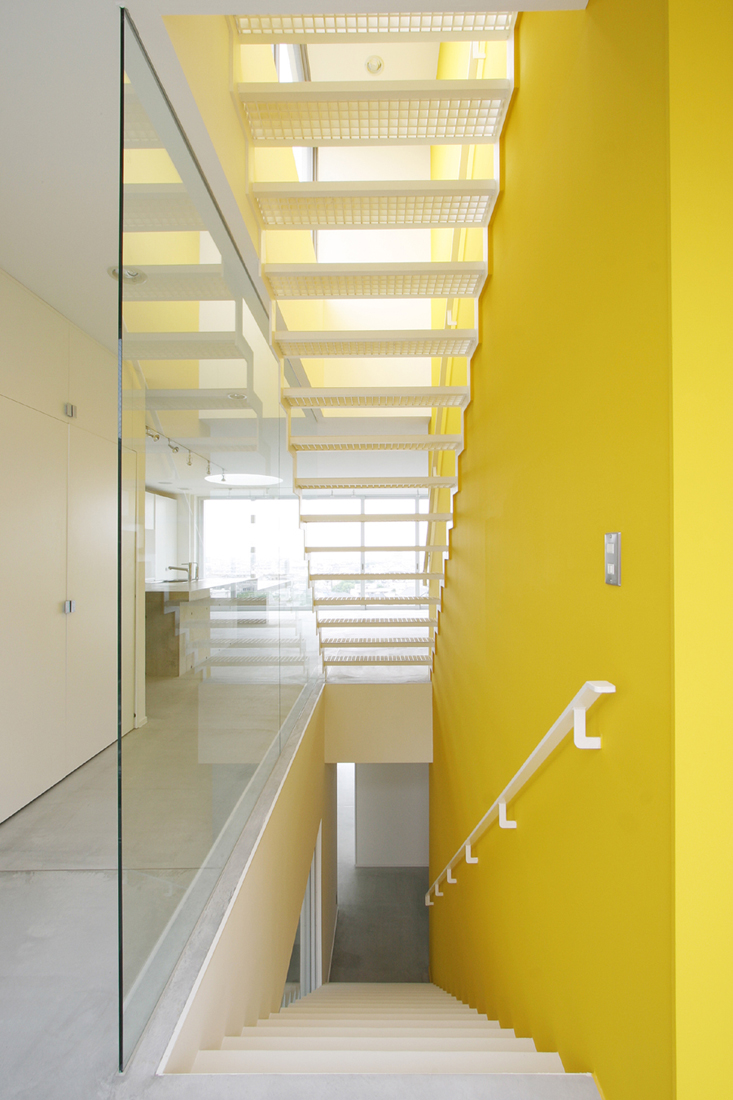
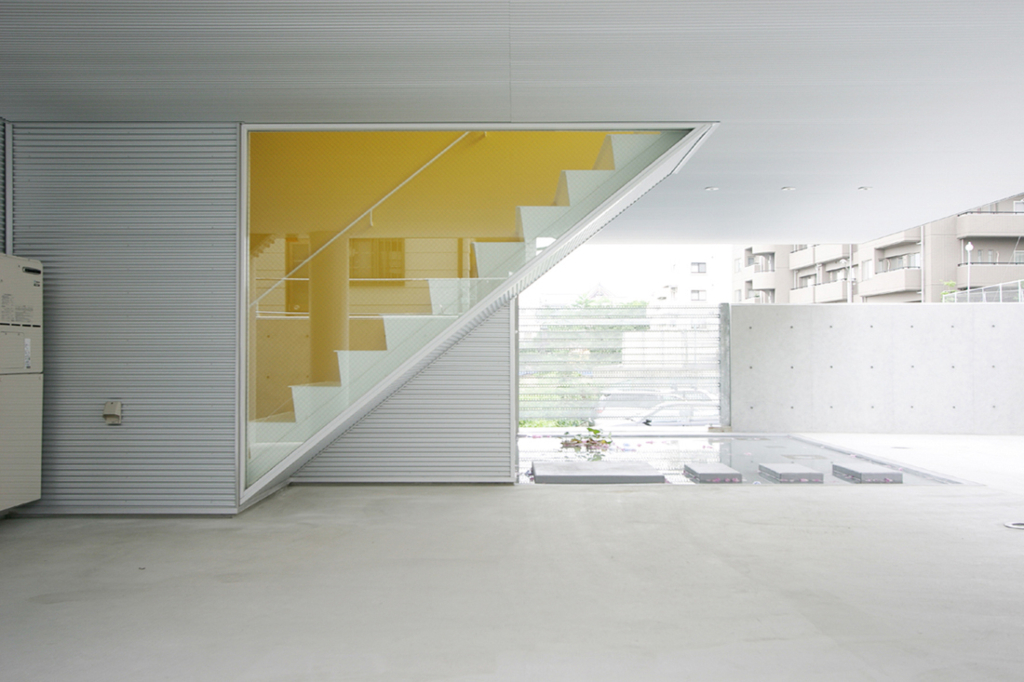
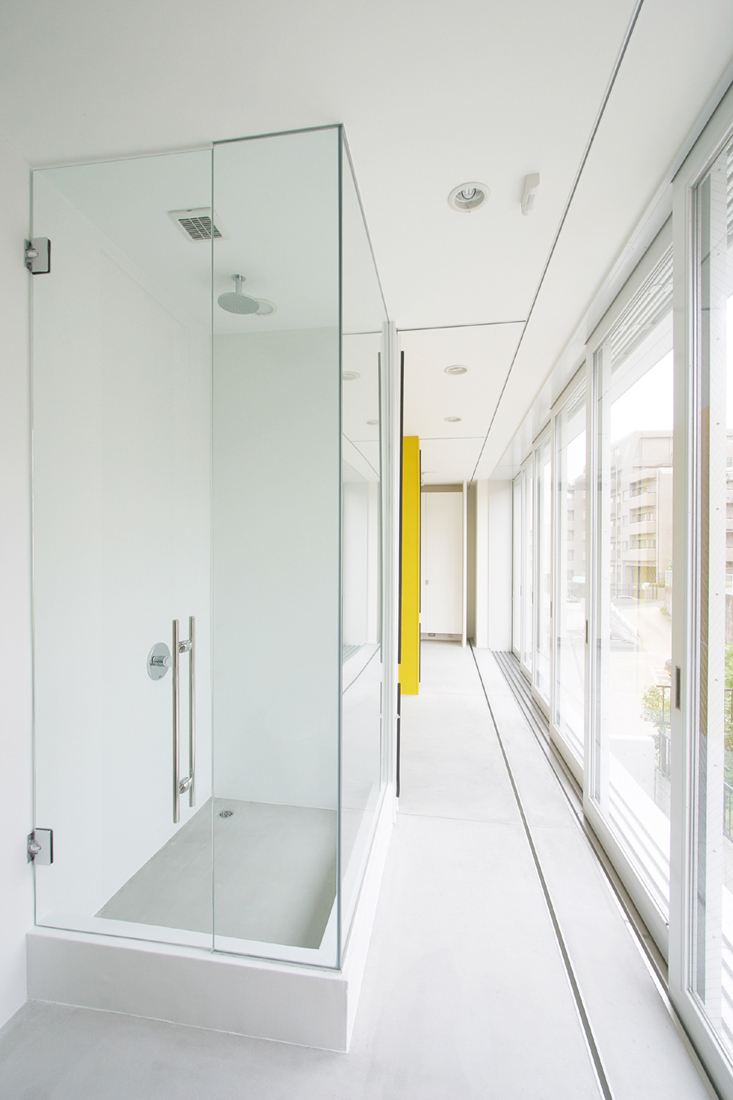
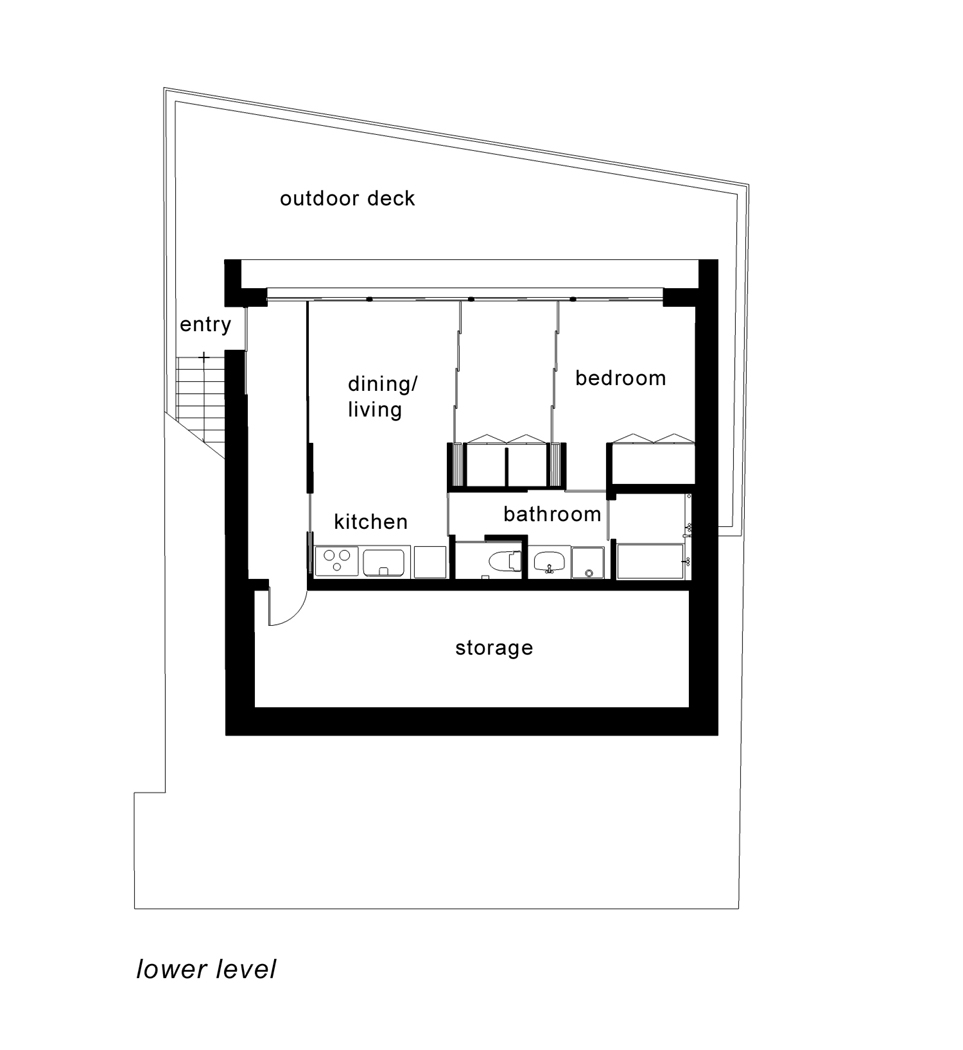
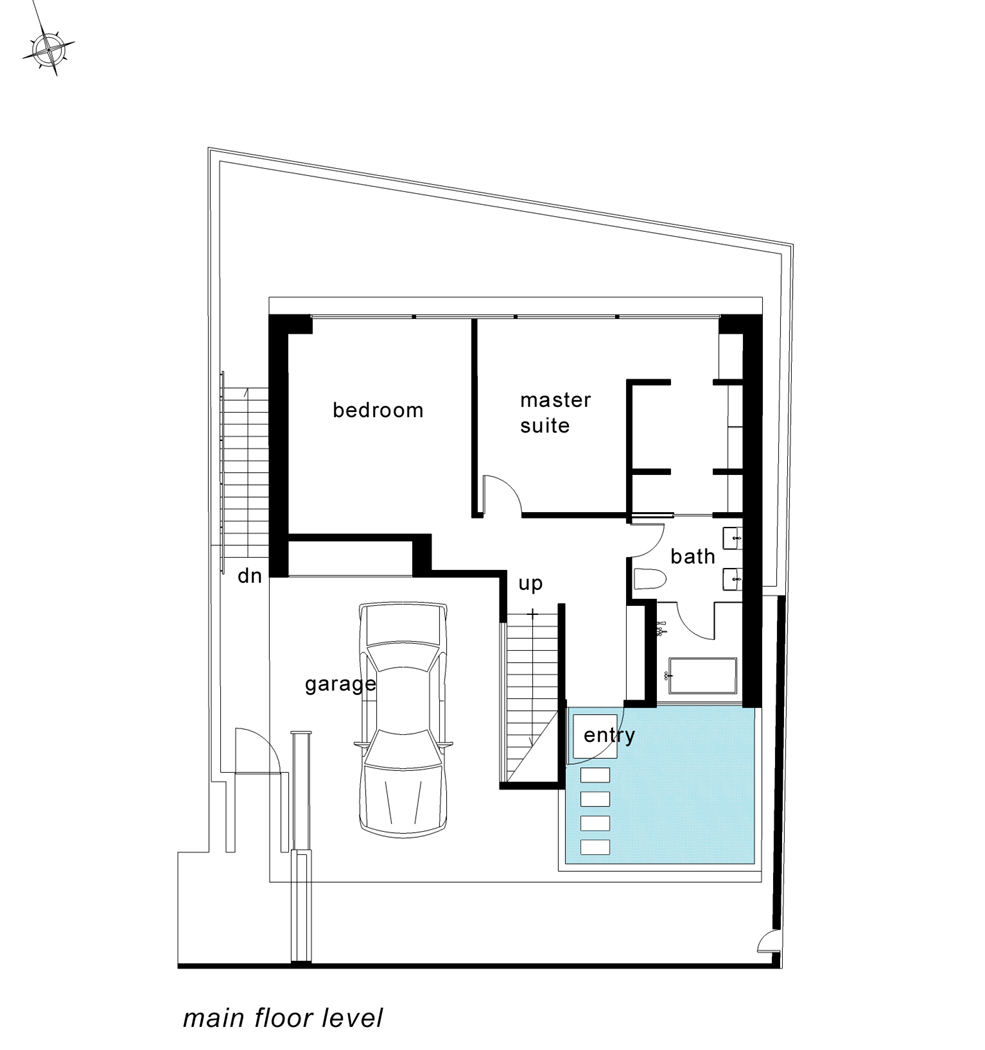
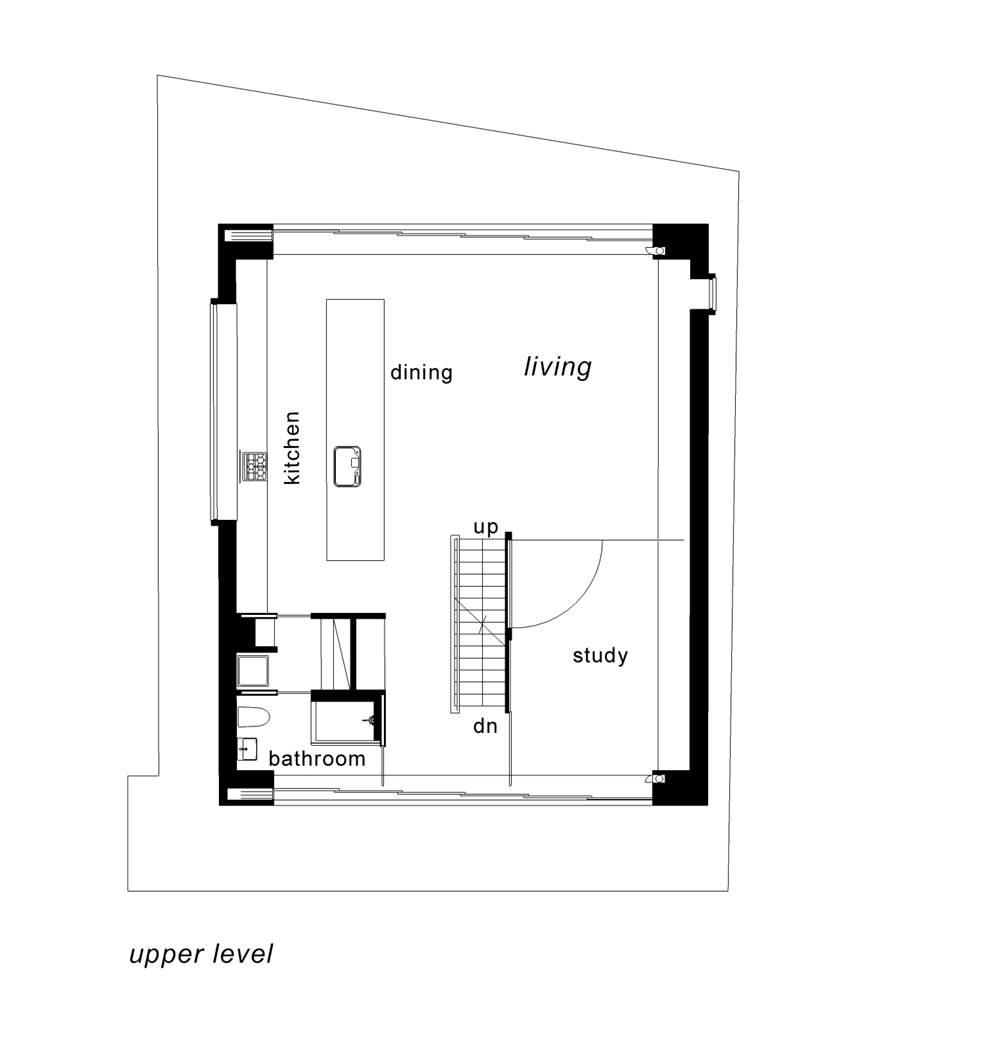
'REF. > Architecture' 카테고리의 다른 글
| [ Cloud 9 - Enric Ruiz-Geli ] Villa Bio (0) | 2010.04.06 |
|---|---|
| [ Marcio Kogan ] Osler House, Brasilia (2) | 2010.04.05 |
| [ Fantastic Norway ] Cabin Verdehaugen (0) | 2010.04.04 |
| [ Morrison Seifert Murphy ] Vanguard Way (0) | 2010.04.04 |
| [ Replinger Hossner Architects ] EB1 Home (0) | 2010.04.04 |
